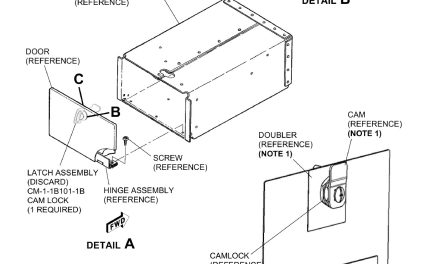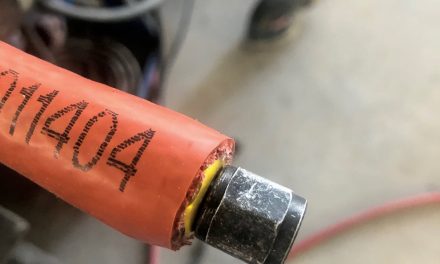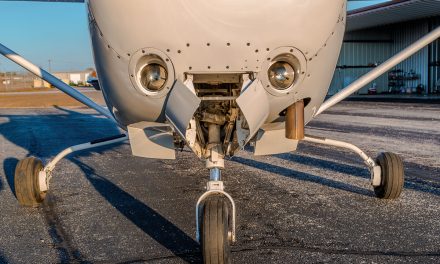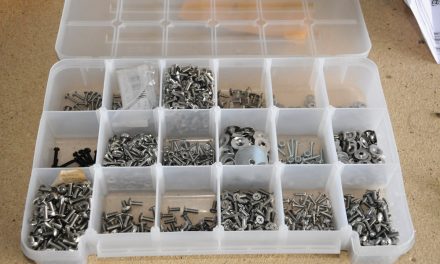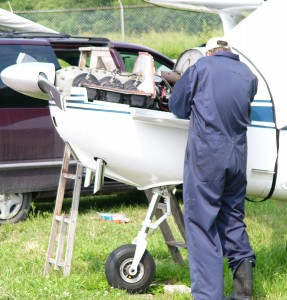 What to Know BEFORE You Go
What to Know BEFORE You Go
Sponsored by AirMart, Inc. – www.AirMart.com
Hey, it’s Not Rocket Science!
3 Simple Maintenance Tasks to Take on Yourself
Several months ago, in my article titled “Owners: It’s Okay to Get Your Hands Dirty!” (May 2014), I encouraged new owners/pilots to get to know their planes better by breaking open their tool boxes and doing some of the maintenance themselves. I laid out the FAR requirements and limitations and gave suggestions on how to get the local A&Ps and hangar bums to give you some training.
This time I thought I would give a few suggestions on some basic maintenance items and fixes a new pilot/owner really should tackle himself. Now keep in mind that all pilots are not created equal. Some have restored antique cars, overhauled engines, designed and built complicated electrical systems, etc., while others refer to the two types of screwdrivers as “the one with the plus sign” and “the one with the minus sign.” In short, what’s a simple task for one may be a very complicated task for another, therefore each pilot first needs to evaluate his own mechanical experience and decide how deeply he wants to venture into his own maintenance. And, as I mentioned in the other article, even a pilot with extensive mechanical experience and knowledge should seek out a trusted mentor before he starts working on airplanes.
FAR 43 Appendix A gives a long list of “preventative maintenance” that a pilot/owner is allowed to do. But, just because you can do something doesn’t always mean you should. In reality, only a few of these items are practical for the average owner to tackle. Here are a few to consider along with some “gotchas” to watch out for:
- Changing Oil. Opening the drain plug, dumping the oil, and then adding the new oil is pretty straightforward, especially if the drain plug is a “quick drain” plug. There are, however, several items that are unfamiliar to someone who’s only done automotive maintenance. These are pretty easy to learn, but you should have someone who knows the proper procedures show you the ropes the first time.
Oil filters should be tightened to a specific torque and secured with safety wire. Also, most drain plugs have crush gaskets that can only be used one time and they too are secured with safety wire. You really do need to have someone teach you the proper way to install safety wire—and yes, there is a right and wrong way to safety something. AC43.13 has a good section on safety wire standards. I’ve seen quite a few oil filters “safetied” with what looked like clothes hangar wire wrapped around the filter. This is the wrong way!
At each oil change, the filter needs to be cut open and inspected. There is a special filter cutter that you will need to purchase. It looks much like a large pipe cutter, and will cut open the filter canister without generating any metal shavings. There are various opinions on how to inspect the paper filter inside, but be warned: not everyone does this correctly. Many guys just cut open the canister, look at the paper filter (while it’s soaked with oil), then toss it in the trash can. This too is the wrong way!
I like to take a razor knife and separate the paper filter from the metal spool. I then cut the filter into three equal-sized sections. Placing one of the sections in a bench vice, I squeeze it very tightly, compressing the pleats together. This will force all of the oil out of the filter and drain it all over your work bench. Remove the filter from the vice and pull it apart like an accordion. Now the area between the pleats will be dry and you can clearly see if there are any metal particles to be concerned about. Don’t worry about all the little carbon flakes, those are normal. If you think you see metal particles, place the filter in a bowl of mineral spirits and brush all the particles out of the filter and into the bowl. Pour the mineral spirits through a coffee filter and allow it to dry. Now dump all the dried material into a small Ziploc bag. At this point, it can be inspected very carefully and you can use a magnet to see if any of the particles are ferrous. If you have any suspicion at all about the particles, have an A&P look at it.
- Changing burned-out light bulbs. On the surface, this appears to be a pretty straight forward task, and it generally is. However, as always, there are a few things to keep in mind. Just because two bulbs look the same, it does not mean that they are. Moreover, you can’t just assume that the bulb currently installed is the correct one. You must replace a bulb with one that has the proper voltage and wattage rating. If you put a 12V bulb in a 24V aircraft, it will blow instantly.
However, with that being said, it’s a good idea for pilots to have a few nav light bulbs, a landing light, and some instrument panel bulbs on hand. These are generally quick and easy to change. Since the beacon light is considered a no-go item, I definitely recommend keeping a spare bulb handy. Of course, to change it you’ll need to know where you can find a ladder to reach the top of the vertical stabilizer.
If you have experience troubleshooting electrical systems, then you may be comfortable tackling a strobe light issue. The high-intensity strobe light system can be tricky because it’s almost impossible to know if the bulb (flash tube) is burned out or if it’s a problem with the power supply. First, confirm that the power supply has good input voltage. If it does, then you can swap the inoperative flash tube out with a known good one from the other wing tip. If that one works, great—just purchase a new flash tube. If it doesn’t, you’ll need to replace the power supply (this will require an A&P signature.) If you’re going to tackle a strobe replacement yourself, please read and understand the following caution: NEVER use a voltmeter to troubleshoot an inoperative strobe flash tube! If you stick the leads from the voltmeter into the plug for the flash tube and turn on the strobes, you WILL fry the voltmeter. These flash tubes run on about 500 volts, and your meter simply can’t handle that much.
Note: FAR 43 Appendix A states that the pilot/owner can replace “bulbs, reflectors, and lenses of position and landing lights.” Some may consider changing a strobe system flash tube falls outside the privilege of the pilot/owner.
- Cleaning sparks plugs. Again, get someone experienced to do it with you the first time. It’s not difficult to remove the spark plugs, but the wire leads can be damaged easily if they are not properly unscrewed. The lead needs to be held with a wrench (or pliers if it has the knurled nut) while the attachment nut is unscrewed. This keeps the wire from being twisted and broken. There are several special tools you should purchase if you’re going to remove, clean, and install your own spark plugs. These are inexpensive and can be purchased at any online aircraft tool store.
- 7/8 magnetized sparkplug socket. This will hold the spark plug as you lift it out. If you drop a plug on the ground, you MUST replace it because it can crack the ceramic insulators inside. The cost of replacing one dropped spark plug would have covered the cost of the magnetic socket. A magnetized socket virtually guarantees that you won’t accidentally drop the plug during installation or removal.
- Vibrator cleaner. This tool has a vibrating blade that will reach down beside the electrode and remove pesky lead deposits.
- Sandblast cleaner. This will clean the electrodes and center ceramic post. You will need access to an air compressor for this. Aircraft Tool Supply offers a Spark Plug Cleaner & Tester that works with both 120V and 220V sources. The cleaner uses a powerful blast of air and abrasive to thoroughly remove carbon deposits from plugs. A recessed observation mirror is perfectly angled to display the electrodes of the spark plug so that you can clearly judge the quality of the spark as the plug is being tested. Visit aircrafttoolsupply.com for more information.
- Torque wrench. Spark plugs should be installed using a torque wrench. Under-torqued plugs can work loose, while over-torqued plugs can crack, damage the threads in the cylinder, and be just downright impossible to remove. Continental engines use a torque of 360 in-lbs and Lycoming use 420 in-lbs. Oh…and don’t forget to put a little anti-seize on the threads.
Each of these tasks is common and must be done on every airplane on a regular basis, so it just makes sense for a pilot/owner to learn to do them himself. Not only will you keep some extra cash in your wallet, but it’s a great excuse to hang out at the airport on a nice Saturday afternoon. Plus, you’ll get the benefit of learning more about your plane.
Don’t forget! FAR 43.9 and 43.5 require that after any preventative maintenance, the pilot/owner must make an entry in the maintenance logs before the aircraft is returned to service.
Per FAR 43.9, the entry must include a description of the work, completion date, signature, certificate number, and the kind of certificate. It’s also a good idea to include Tach or Hobbs time.

